The Best Trees to Plant This Fall and Winter
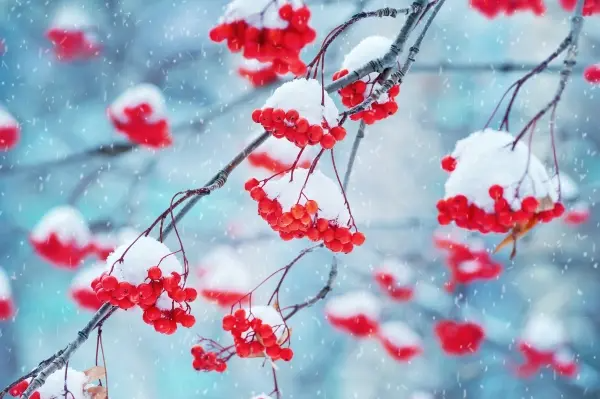
Last Updated April 26, 2023
Many people have asked the question, can you plant trees in fall? The answer is yes! However, depending on your winter climate and the type of tree, planting trees in fall can have varied success.
When deciding what types of trees to plant for the fall and winter months, it’s important to know which trees are most compatible to your area. There are many different climate and hardiness zones and knowing which one you’re in is crucial to planting trees that will not only survive but flourish this winter. Understanding your climate and hardiness zone will make choosing the right trees to plant much easier. In this article, we’ll take a look at some different types of trees and what climate and plant hardiness zone they’re best suited for.
Table of Contents:
Buckeye
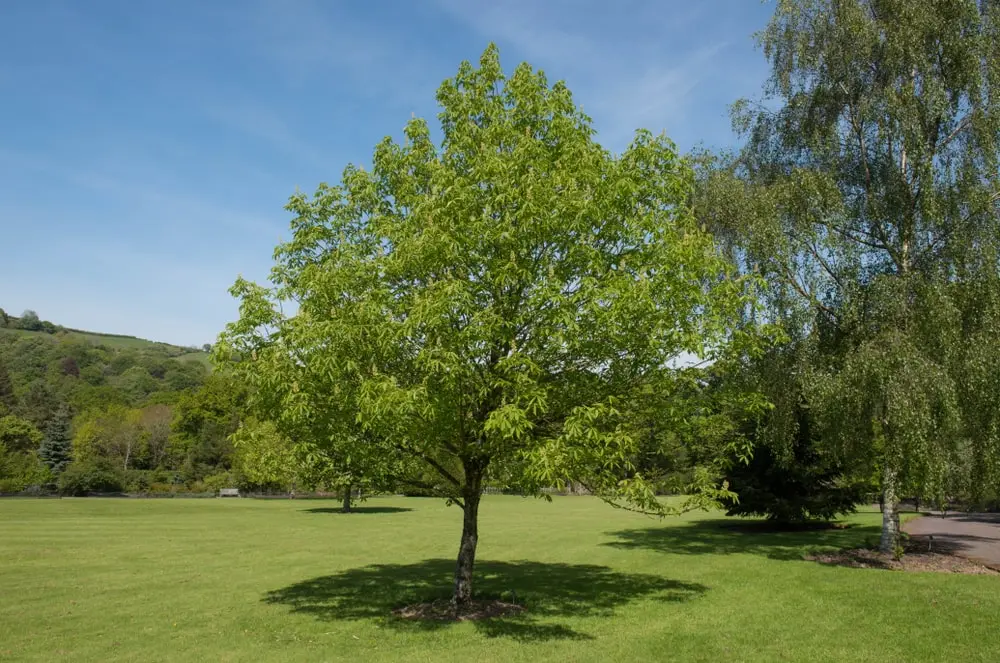
There are several different types of buckeye trees, and most of them can be found in the northern hemisphere of North America and Eurasia. The buckeye tree is the state tree of Ohio, where many merchants have found fortune picking the trees fruit and selling it for profit. These magnificent trees can grow up to 100 feet tall on the high end and are best suited for hardiness zones between 4-7.
Crabapple
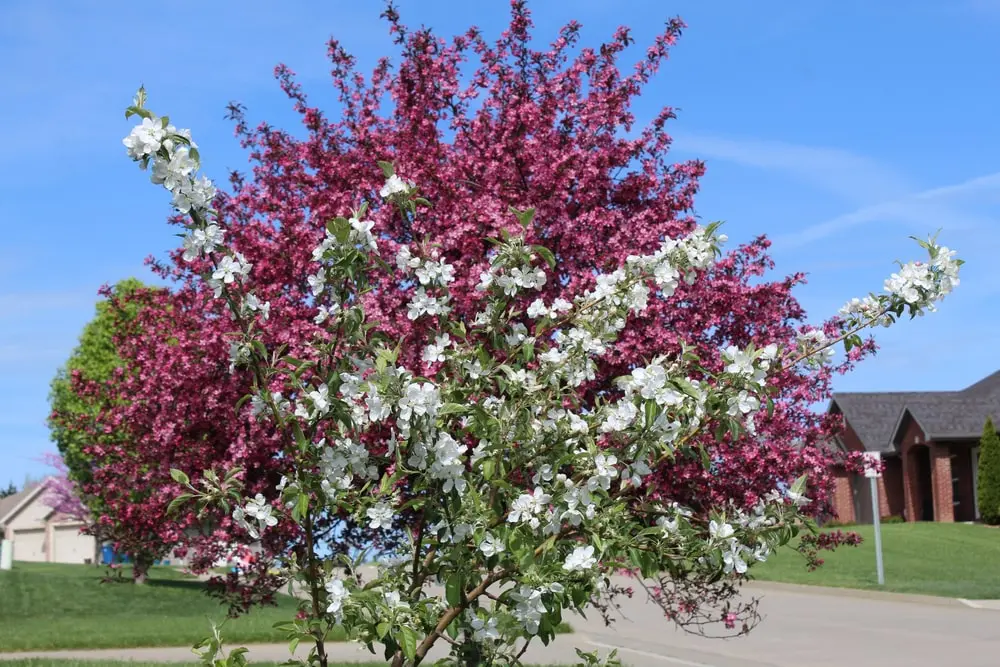
Crabapple trees are uniquely beautiful and are available in several different colors. These beautiful trees also provide sustenance for a variety of creatures. When they’re in full bloom, many species of crabapple trees and bushes produce beautiful flowers. The flowers then fall away and are replaced by their namesake, the crabapple. You’ll want to plant your crabapple tree in full sun and in hardiness zones between 4-8.
Elm
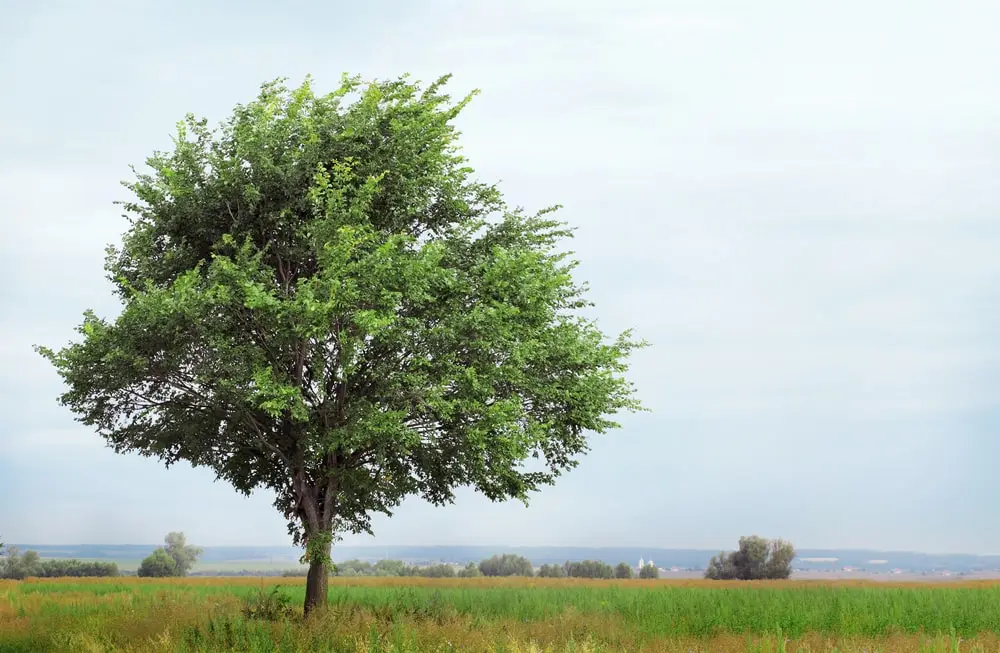
Elm trees, which are most commonly found in Asia and North America, are deciduous and semi-deciduous trees depending on the type you choose. They can grow anywhere from 60 to 80 feet in height and tend to survive best in hardiness zones between 4-9. Elms adapt easily to both wet and dry soil and tolerate urban conditions well. Mature trees provide great shade, which makes them a preferred choice for urban neighborhoods. However, keep in mind that if planted too close to sidewalks or walkways, the roots can crack or raise the concrete and create a hazardous condition. Container grown trees can be planted throughout the year.
Hawthorne
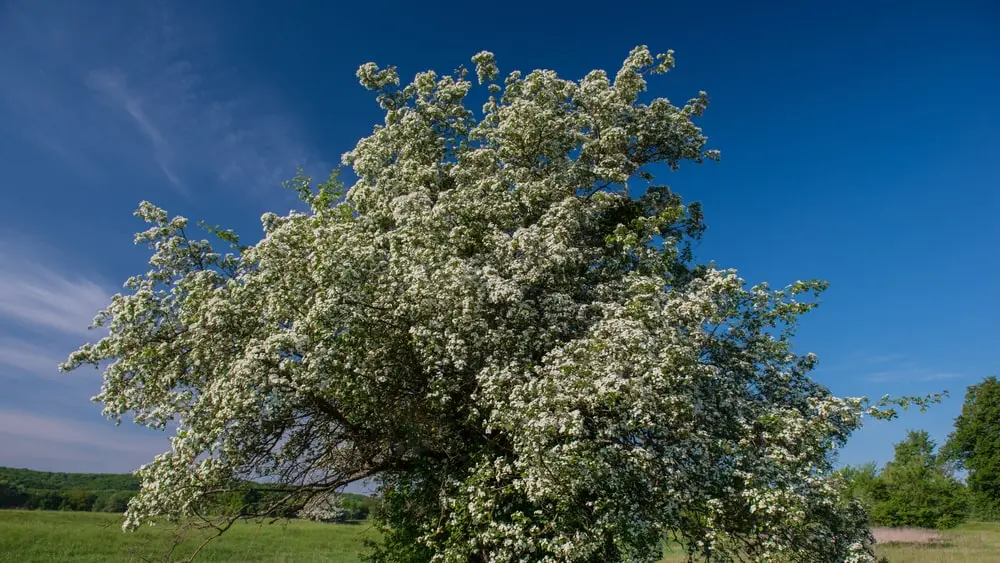
Hawthornes are unique and beautiful trees that grow out rather than up. They may only reach a mature height of 15 to 30 feet, but they tend to bloom out in a circular direction. They often have simple leaves that turn to gorgeous flowers and end up as small, apple like pomes. The fruit of a Hawthorne is edible and actually has medicinal purposes when properly prepared. The Hawthorne is best suited for hardiness zones between 5 through 9.
Honey Locust
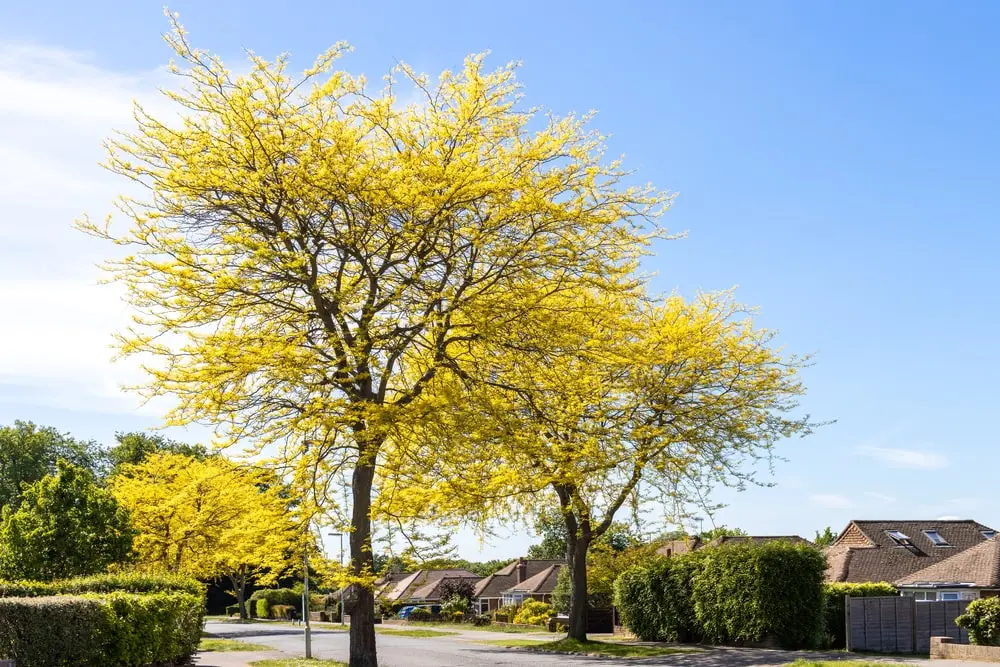
The honey locust tree grows best in deep, moist, and fertile soils that are close to neutral in terms of acidity. Hardiness zones between 3 through 9 are best for the honey locust if you want them to reach their full height of 30 to 70 feet.
Linden
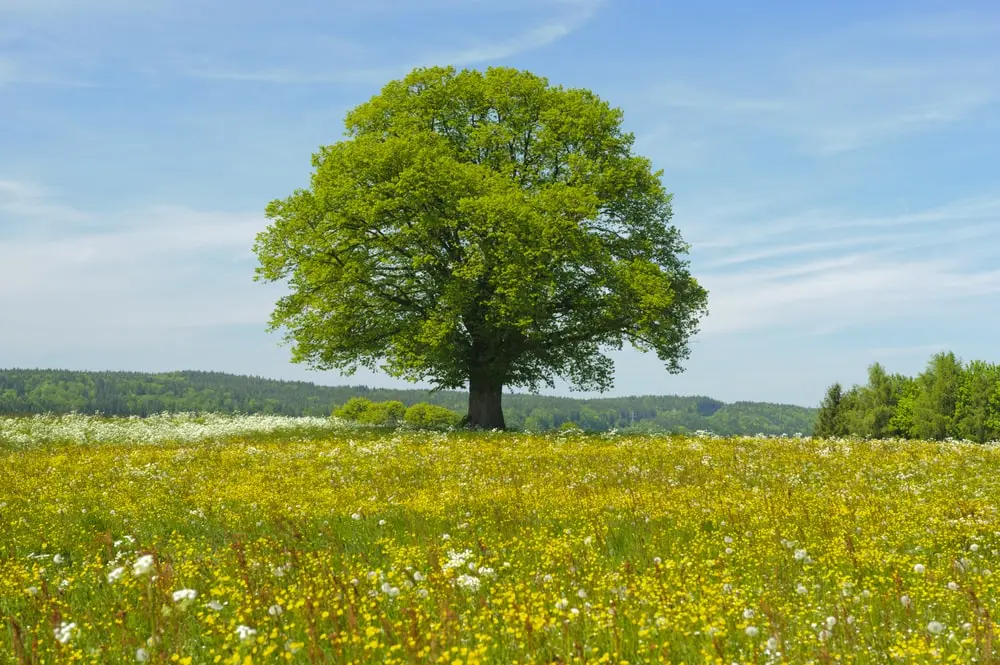
The linden is a large tree. It is part of the Tilia, which is a genus of about 30 different species of trees or bushes that are native throughout most of the temperate Northern Hemisphere. When properly planted and groomed it can grow up to 80 feet tall, and spread as wide as 50 feet. They are best suited for zones between 3 through 8, and make for a nice addition to any yard or wooded area.
Maple

Sugar Maple trees are best known for producing a sap that gets turned into the famous maple syrup. The leaf of the maple tree is also prominently displayed on Canada’s national flag. It’s durability and strength make maple wood ideal for use in high-end furniture, flooring, cabinetry and kitchen accessories. These trees typically grow in cooler northern climates and hardiness zones between 5 through 9.
Spruce
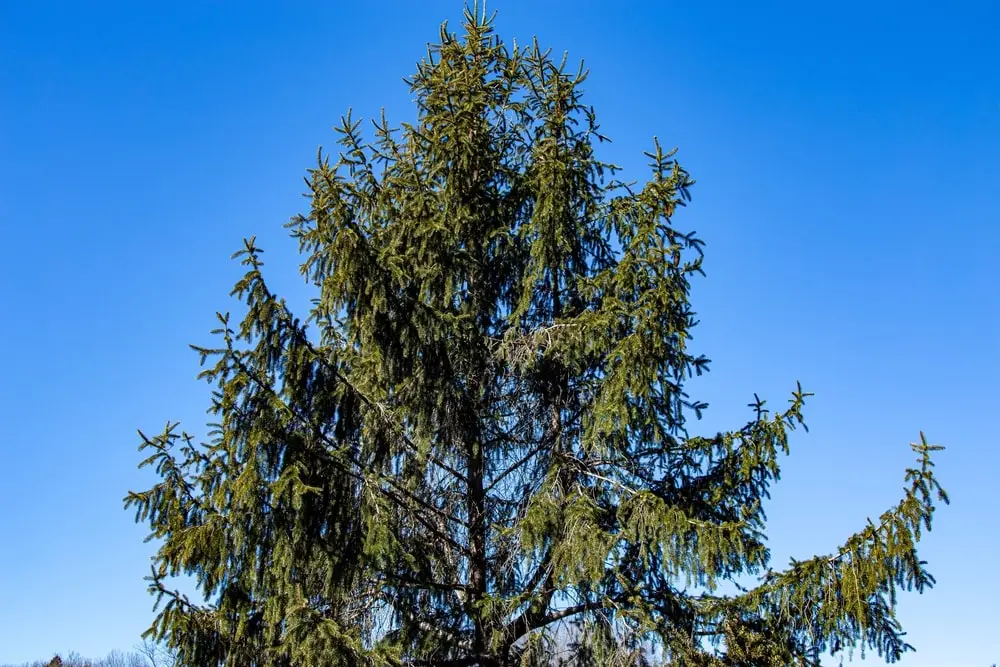
Spruce trees are excellent for planting individually or in groups as windbreaks and shelterbelts for wildlife. These trees usually don’t require much pruning and grow in a variety of colors, including yellow and silvery blue. The fresh shoots of many spruces are a natural source of vitamin C. The spruce tree is popular throughout North America in hardiness zones between 2 through 7. They do well in cold climates but struggle when planted in hot or moist areas of the country. They can grow as tall as 60 feet and spread out as wide as 40 feet.
Thuja Green Giant
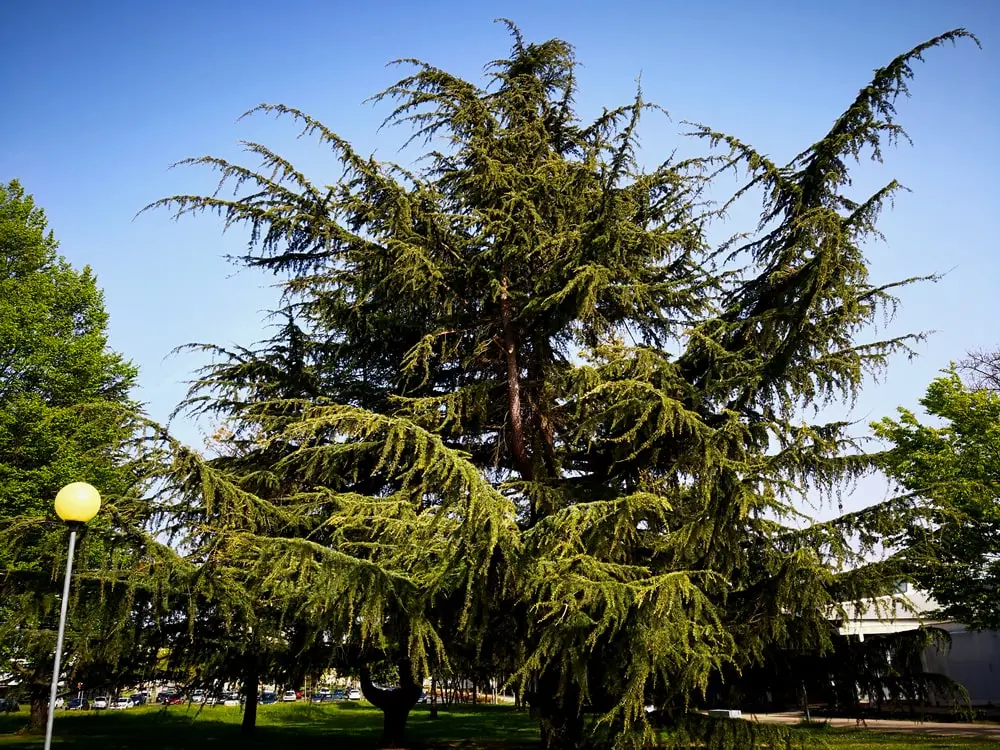
The Thuja Green Giant tree is an evergreen that thrives best in colder climates with lots of snow. They can live up to 40 years in the wild and even longer if properly cared for. When conditions are ideal, they can grow rapidly, up to 3 feet per year and reach heights of 50-60 feet. If you have the space and live in a hardiness zone between 5 to 9, then the Thuja Green Giant tree is an option to consider.
Italian Cypress

Italian cypress is a medium-sized conifer (cone-bearing seed tree) found across the Mediterranean region. They can grow up to 70 feet tall (in some cases taller), but remain narrow (only 10-20 feet wide). They also do well in the colder climates of North America with a hardiness zone between 8 to 10. The seeds from these trees germinate slowly and may take up to a year from germination to planting, but once established they can grow up to 3 feet per year.
Weeping Willow
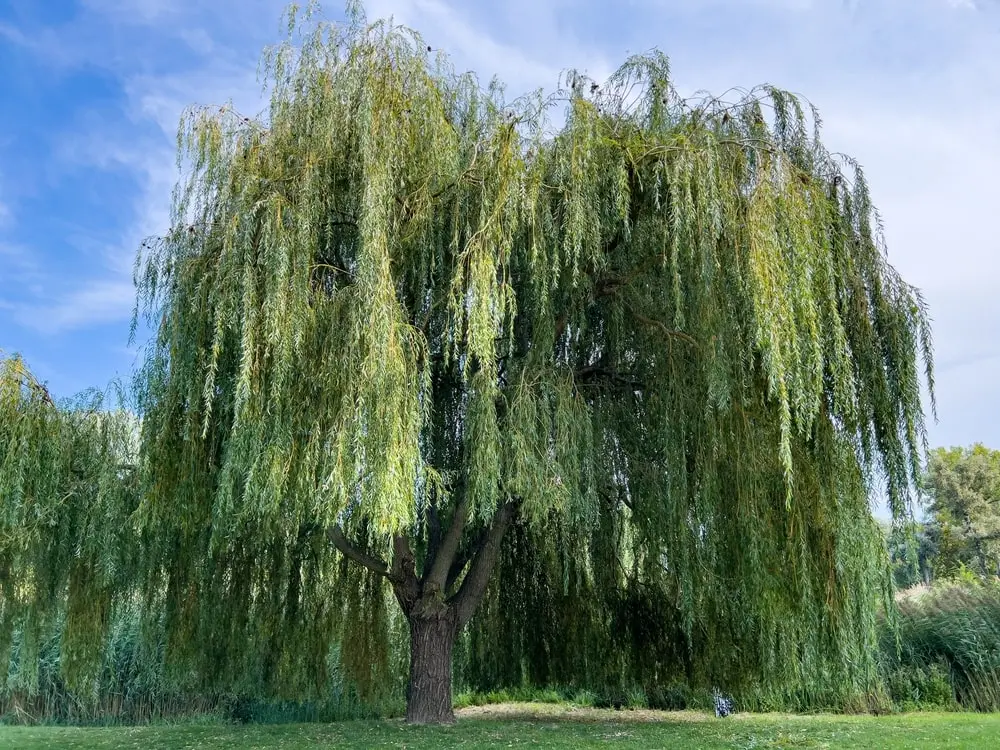
The weeping willow is one of the most famous trees in the world, due to its appearance and its frequent mentioning in songs and movies. It’s a truly beautiful tree that’s often seen planted next to ponds and lakes. However, willow trees are highly suitable to diseases like, cytospora canker, bacterial blight, and tar spot fungus, among others. Weeping willows do their best when planted in mostly sunny areas or partial shade areas with slightly acidic and moist soil. Hardiness zones between 4 through 10 are best suited for the willows needs.
Get Professional Assistance with Tree Selection
Adding trees to your property has many benefits. A few well-placed trees can provide shade for your lawn and really enhance the curb appeal of your home. Choosing the right trees to add to your property is a big, long-term investment so if you’re still not sure about which or how many trees you should add to your yard, don’t worry. The Grounds Guys can help you make the right choice for your property. We’ll test your soil and recommend the perfect trees based on conditions and location. So don’t stress over which trees to plant this fall, let The Grounds Guys help you. Contact us today to request a free estimate for commercial or residential tree work services!
 Click to call
Click to call


